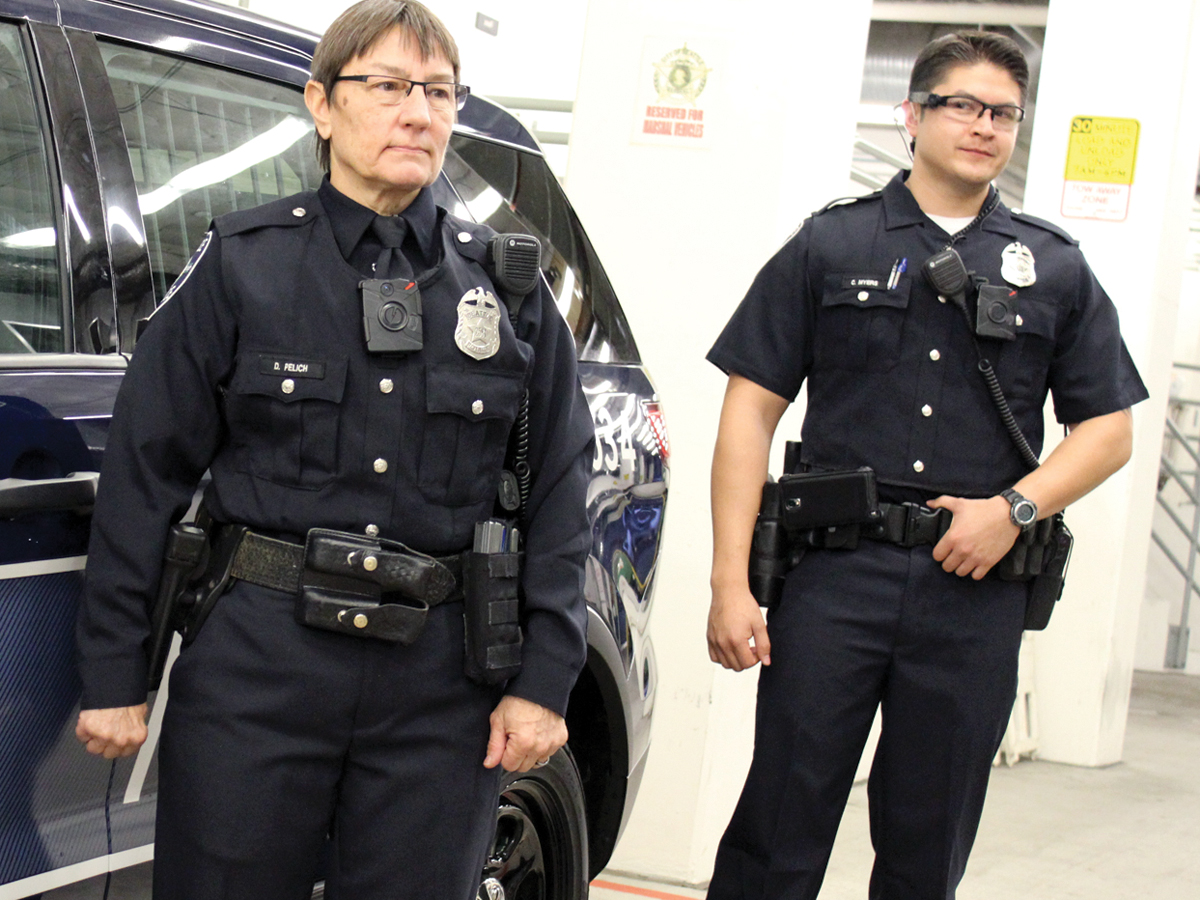
A total of 20 patrol, metro and traffic police officers have volunteered to test the use of body cameras as part of a 60-day trial, according to the Riverside Police Department (RPD). Starting May 1, the trial will be used to help the department develop its policy regarding body camera technology and future usage.
Lieutenant Chad Milby of the RPD Community Service Bureau said that the use of body cameras have been discussed within the department for a few years, but the proper equipment and technology only recently became available.
Although the use of body cameras is currently being tested, the use of recording technology is not new. According to Milby, dashboard cameras have been used for over 12 years.
Playing a primary role in the trial phase, Riverside Lieutenant Bruce Loftus stated that though the dashboard cameras were successful, they could only be used in a vehicle, encouraging the department to think of other ways to expand camera technology.
“Some body cameras can be worn on your head like glasses, some can be worn on the shoulder lapel … what we chose to use is one worn on the chest area of the officer,” stated Loftus. The camera is activated by flipping the lens up and will be visible to any civilian who may be confronted by a participating officer.
Although he sees this as a step up from dashboard cameras, Milby said that body cameras still have their limitations. “It’s only one-view, you can’t see what’s going (to the) right or to the left,” he said. “You’re just seeing what’s in front of (the police officer) which is something the public and police have to take into consideration.”
The technology will be evaluated based on its functionality and how helpful it is as evidence in criminal cases. The cameras are being provided by a vendor free of charge for the duration of the trial period, according to Loftus.
If successful, the program will extend to all traffic and patrol officers and hold an initial cost of $300,000. Discussions about local funding depend on the success of the 60-day trial, but Milby thinks that some federal funding may come through. Announced in late 2014, the Body-Worn Camera (BWC) Pilot Partnership Program is part of President Barack Obama’s plan to invest $75 million over the course of three years to help purchase 50,000 body cameras for law enforcement agencies nationally.
The program comes at a time when tensions have heightened between police officers and minorities in various cities, leading to an outbreak of demonstrations across the country. Recently, a 25-year-old African American man, Freddie Gray, suffered fatal injuries during an encounter with Baltimore police officers.
Kevin Mitton, a fifth-year computer science major who is African American, claims to have been stopped 10 times in the last three years by Riverside officers without being given a traffic violation, and furthered that one instance involved a gun which was prematurely drawn on him. “I believe if a body camera had been worn, I may have not even been stopped,” said Mitton. “Accountability needs to be instilled on police officers in light of situations (involving police brutality) that have been happening across the United States.”
Loftus emphasized body cameras will also help increase accountability between officers and the public. “The cameras will help with officer complaints too because if a citizen makes an allegation against an officer, video will show for the most part if it happened or not,” said Loftus.
Many students agreed that body cameras would help increase accountability and transparency, but are concerned about the potential misuse that may be associated with the new technology.
Second-year linguistics major Johnson Pham, who also led the Stop Police Brutality/UCR Stands with Ferguson protest in October 2014, sees the body cameras as a step in the right direction, but believes it is not the end-all solution to keeping officers in check. “There is also the issue of who is reviewing the footage, and who can be held accountable if for some reason, footage is lost, or the camera happened to be malfunctioning,” Pham said.
Breana Ross, campus organizing director of the ASUCR office of external affairs, said that the cameras would help improve accountability and transparency, but felt that video evidence have not been fully utilized.
“In the media there has been multiple cases of police brutality in which footage has been recorded, but justice has not been served,” she said, referencing the death of Eric Garner, in which a recording of the incident did not lead to a conviction.
Breana Ross is a former advertising representative at the Highlander.








